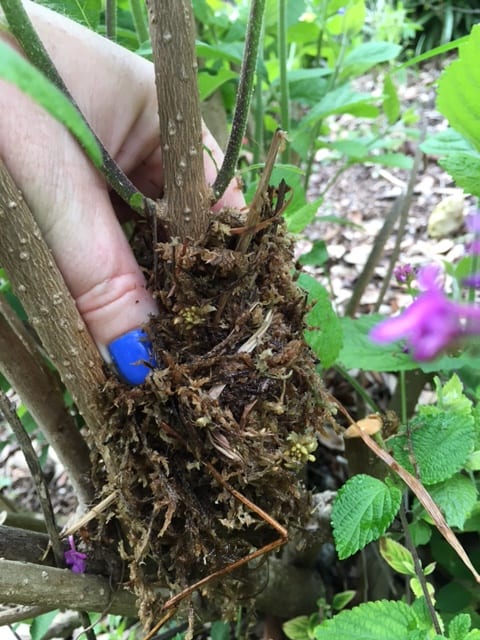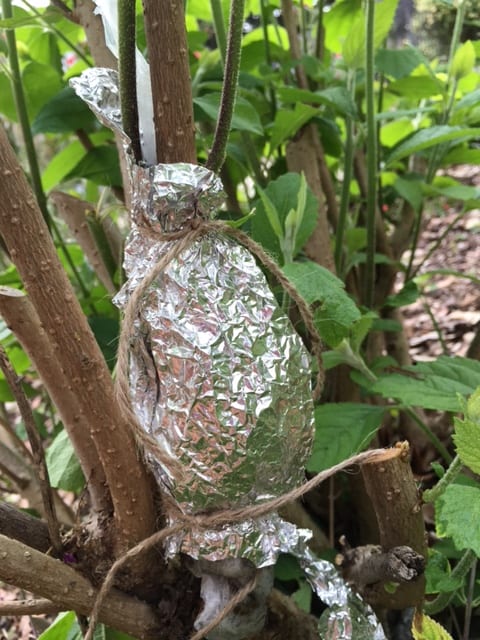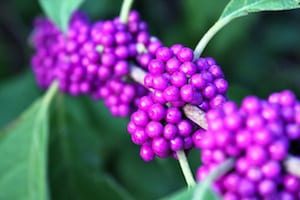Air layering is a way to propagate your favorite plants, especially those “hard to root” plants with woodier stems. Instead of removing a stem/limb from a parent plant, you actually make small cuts to the stem/limb while it is still attached. It’s only after roots are developed through the process of air layering that the stem/limb is removed. Don’t be intimidated by the number of steps you take to propagate your plants by air layering, they truly are simple and the results can be fantastic.
Supplies Needed to Propagate Plants by Air Layering
- Sharp and sterilized knife (3:1 water to bleach solution)
- Rooting Hormone
- Sphagnum Moss
- Plastic Wrap
- Aluminum Foil
- Garden Ties or Twist Ties
- Quality Potting Soil
- Pot for later. (Size depends on your plant.)




11 Steps to Propagate Plants by Air Layering
- Choose a healthy shoot to propagate into your new plant. The shoot should be at least pencil size in diameter if not larger, and about 1 foot in length.
- Use your sterilized knife and make two parallel cuts (about 1” to 2” apart), cutting just the outside layer of bark on your limb/stem.
- Connect the two parallel cuts with one vertical cut to the outside bark, and remove (peel off) the outer ring of bark to get to the fresh, inner wood of the plant.
- Lightly dust the exposed, wounded area with rooting hormone.
- Apply a handful of damp sphagnum moss around it. Gently tying the moss to the limb/stem makes it easier to do the next step.
- Secure plastic wrap around the entire ball of sphagnum moss and make a tight seal by using garden ties or twist ties at the top of the plastic and the bottom of the plastic. You’ve basically created a little sphagnum moss filled plastic bubble.
- Wrap aluminum foil around the entire bubble of plastic to block out light so that the roots can grow in peace.
- Check under the foil and plastic often to make sure the sphagnum moss is still moist. (A spray bottle of water works great to add moisture if needed.) Make sure and reseal it tightly each time.
- You might want to support the wounded stem/limb with a stake to prevent it from splitting or breaking off at the wounded site, especially if it’s a little heavy.
- In a few weeks, roots will be present inside the plastic bag. You can then cut the stem/limb off of the parent plant. Cut just below the ball of sphagnum moss and the roots. Take care to be gently with the newly formed roots that are intertwined with the sphagnum moss.
- Immediately pot up your newly propagated plant in a container filled with quality potting soil. Allow the plant to grow in this container for awhile until it is large enough to be transplanted to a permanent home.

Rose

Hydrangea

American Beautyberry
Plants to Propagate by Air Layering.
Many woodier plants are great specimens to try to propagate by air layering. Here are a few to try.
- Azaleas
- Oleander
- Camellias
- Hydrangeas
- Beautyberry
- Pecans
- Apples
- Roses
- Forsythia
- Citrus
Of course there are many more plants you can try to propagate by air layering that are not on this list, and also more ways to propagate (directly in water, planting seed, root cuttings, etc.) but this was just to give you an idea. You’ll never know if you can propagate a plant successfully unless you try. It doesn’t take too much effort and the reward of a brand new plant that you created is outstanding.
~The Happy Gardener


When is the best time to buy a Hydrangea for planting into ground?
Thanks
Best time for planting woody perennials and shrubs in San Antonio is fall. The weather has cooled enough to not put extra stress on the roots of plants, and it also gives plants all winter to develop roots so they will be strong enough to hold up to our hot summer weather.